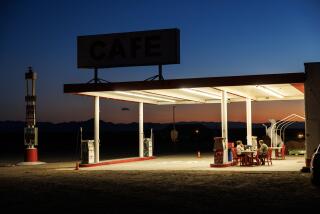Endangered Jobs a Slice of the Past
- Share via
SAN FRANCISCO — John Wentzel has a job that’s quaint, charming, nostalgic--and vanishing.
Wentzel, 68, repairs old-fashioned tube radios, outdated since the transistor reduced the “wireless” to pocket size.
“I get old ones brought in all the time,” said Wentzel, 68. “But the real oldies are in my own collection. I have one that goes back to 1923.”
Then there’s Michal Grycz. He gets up each morning and delivers milk. Or Lee Wedeking, who operates a switchboard.
What’s a switchboard? Well, kids, it goes back to the days when people, not mammoth computers, handled almost all telephone connections.
Jobs come and go, according to Mike Swain, of Raleigh, N.C., an occupational analyst who helped revise the Dictionary of Occupational Titles for the U.S. Department of Labor.
The dictionary was first published in 1939. The department should be releasing the updated version of the fourth edition soon. The dictionary is used by job placement officials to match people and jobs.
According to Swain, 74 occupational titles have been dropped from the dictionary and 134 have been combined with other occupations.
The dictionary does contain “radio repairer, tube,” so Wentzel still exists as far as the federal government is concerned. Wedeking’s switchboard is in there, too. Not so for Grycz’s job.
“We still have a few milk route drivers here in Raleigh,” Swain said in a telephone interview, explaining that the gender-related “milkman” was replaced by “driver, milk route” when the fourth edition came out in 1977.
The new edition won’t even have that.
“There’s a generic ‘route driver’ to cover all deliveries,” Swain said.
Some other titles that are being dropped grab your attention. Ever met a process stripper? Sounds like someone who takes off clothes while serving a court document.
“Actually, it has something to do with color photography,” said Swain.
But none of the jobs rings of the past like Wentzel’s, Grycz’s and Wedeking’s.
Wentzel’s shop, Aladdin Radio Repair, is a real time tunnel.
The radios are right out of a Norman Rockwell painting. It’s easy to imagine a family gathered in the living room, listening to World War II coverage on a console radio topped with photos of relatives in military uniform.
A visitor can be excused for being disappointed when a radio is switched on and Jack Benny’s voice doesn’t flow out, or Boston Blackie fails to expound about being “a friend of those who have no friends, enemy of those who make him an enemy.”
Surprisingly, Wentzel said he has no trouble finding parts.
“Some suppliers have big stocks and I’m always coming across World War II stockpiles,” he said. “You’d be surprised how much business there is for tube radios.”
If ads were placed for Aladdin, there would be so much trade he couldn’t handle it, said Wentzel.
“I get business from all up and down the West Coast now,” he said.
Grycz, the milkman, gets his business up and down the San Francisco Peninsula.
“The fuel bill for the truck is $3,500 a year,” said Grycz, who serves about 360 customers. Grycz, one of only two independent contractors who buy milk from Peninsula Creamery in Palo Alto and deliver it to homes, is single and 24.
“If I got married and had a family I would put this business in overdrive,” he said, noting that he has 30 more customers this year than last. “But I tend to be social.”
He thinks there’s a big market for home delivery.
“People like the nostalgia,” he said. “Milk tastes better from glass. Besides, there’s more awareness about ecology now and we keep using the same bottles.”
Peninsula, which quit home delivery in 1975 and now mainly sells to stores, kept a 1946 milk truck, the kind with the “stand-up seat.”
“It still runs and we use it for charity events a lot,” said sales manager Roy Voris, a milkman himself for 15 years until he joined the sales force in 1970.
The truck, said Grycz, wouldn’t do for his route.
“It would be too small for me,” he said. “In the old days, a driver could go back six times and load up, which they often did. It was OK when the route was 20 blocks and everybody took milk.”
Lee Wedeking’s switchboard at an answering service seems as outdated as the truck, but it came through when the devastating earthquake hit Northern California in October, 1989. Many computer systems were crippled by the temblor, but the switchboard still operated.
“It’s nice to be able to take a disaster and turn it around for people,” said Wedeking, who “pushes and pulls cords” as an operator at Center One Answering Service in San Bruno, just south of San Francisco. “How many chances do you get to really help somebody?”
More to Read
Inside the business of entertainment
The Wide Shot brings you news, analysis and insights on everything from streaming wars to production — and what it all means for the future.
You may occasionally receive promotional content from the Los Angeles Times.










